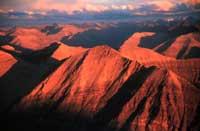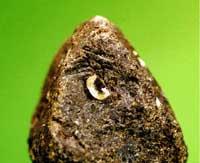The roots of the mountains, more and more compact
2002/07/01 Roa Zubia, Guillermo - Elhuyar Zientzia

The surface of the Earth floats in the liquid mantle, like ice on water. The mantle is made of molten stone and is denser than the earth's crust. However, geologists know that this "flotation" is not as simple as that of water and try to understand the dynamics of the mountains. In fact, the mountains are only rasas of a floating solid layer.
Although we only see the top, these rasas are quite symmetrical, that is, for each mountain, there is another in the mantle that is "face down". This symmetry is decompensated by surface erosion and, when produced, the mantle pushes the surface upwards, but the surface rises much less than the calculations predict. Why?

To answer this question, U.S. geologist Karen Fisher, from Brown University, has conducted studies of gravity and seismic reflection experiments in both ancient and new mountain ranges. These studies allow us to know the depth to which is the limit between the terrestrial surface and the mantle and, therefore, to analyze the movement of these layers.
The fluctuations of the border are explained by a process called metamorphosis. For millions of years, and due to the influence of the pressure, the material of the mantle is compact in this metamorphosis, so that the "flotation parameters" adapt, among other things, the position of the limit between the two layers.
Although mountains float in molten material, they do not follow the dynamics of conventional fluids, since the mantle is compressed over time.

Gai honi buruzko eduki gehiago
Elhuyarrek garatutako teknologia





